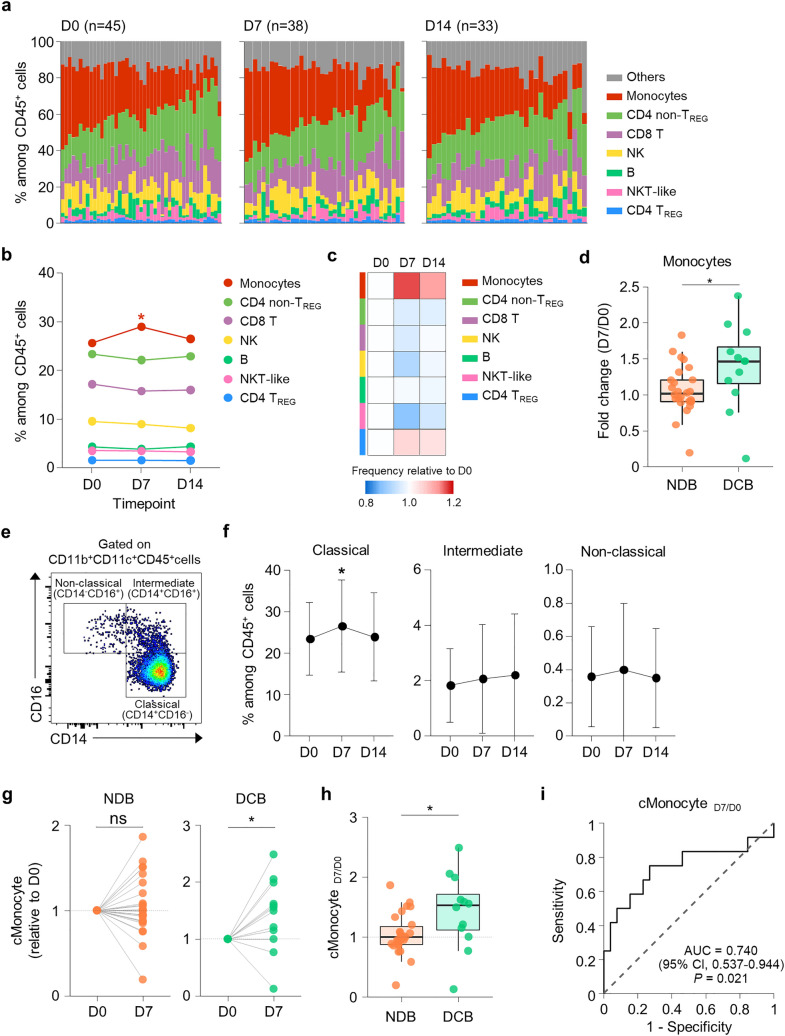Fig. 1.
Change in the frequency of circulating classical monocytes among immune cells predicts durable clinical benefit. a Individually plotted relative frequencies of immune cell populations among CD45+ cells at D0, D7, and D14. b Mean frequencies of immune cell populations at D0, D7, and D14. c Heat-map of relative frequency changes of immune cell populations from baseline. d Fold-change of the frequency of monocytes among CD45+ cells according to clinical benefit. e Flow cytometry plot for defining classical, intermediate, and non-classical monocytes. f Mean frequencies of classical, intermediate, and non-classical monocytes among CD45+ cells at D0, D7, and D14. g Frequencies of classical monocytes among CD45+ cells relative to D0 in patients with DCB and NDB. h Relative change in frequency of classical monocytes (cMonocyteD7/D0) according to clinical benefit. i The ROC curve for predicting DCB using cMonocyteD7/D0. The results shown in f are expressed as the mean ± SD. *p < 0.05. Statistical analyses were performed using Wilcoxon signed-rank test (b, d, f) and Mann–Whitney U-test (d, h). TREG regulatory T cells, DCB durable clinical benefit, NDB non-durable clinical benefit

